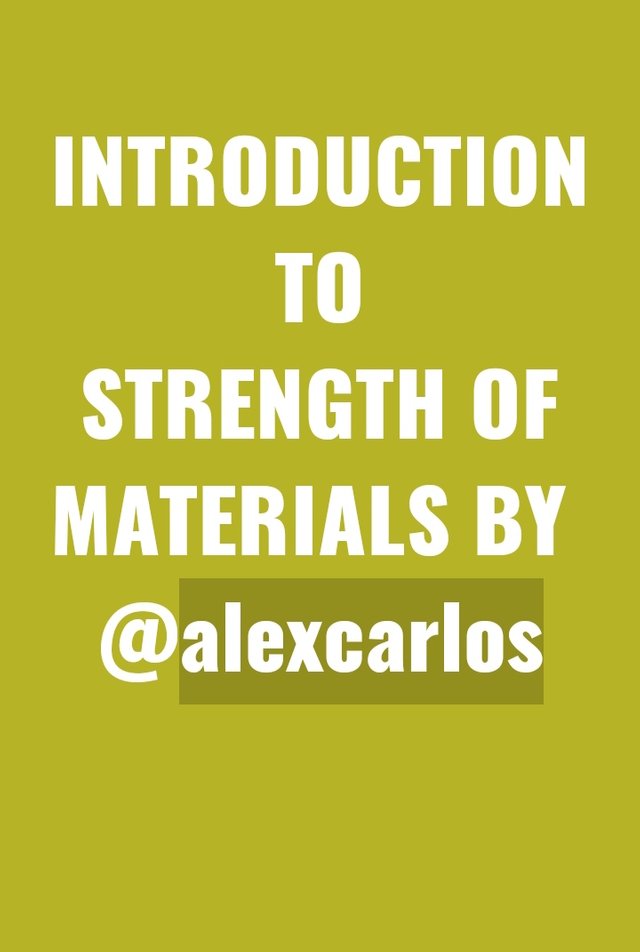Subject: Engineering ( Strength of materials), week 1 by @alexcarlos || 10% payout to @steemkidss
Hello and welcome everyone to my first lecture of engineering. I was selected teacher in last week but due to some work i was not able to gave last lecture. Today i decided to gave my first lecture.

As engineering has lot of subjects among all the subjects i choose strength of materials subject because this subject is vary important in engineering also this is basic subject of engineering. Today i will gave to brief introduction about this subject and also i will tell you about some basic topics of this subject. Hope you will understand these concepts easily. So lets start:
INTRODUCTION
Strength of materials refers the ability of any material to withstand the applied force. This means this subject tells us when we apply load on any material what will happen when we apply some load on the material. What will be its reaction when we apply load wheather it will withstand it or it get deformed. As materials when users gets force such as when we make a column in building , the roop puts force on it and he withstand it. So strength of material tells us behavior of material under the actions of force.
What is load?
The external force acting on any material is called load. The load may be may of many forms like compressive load or tensile load. In simple words when we put some force on any material other than the natural forces such as we put or push any material is said to be an load.
.png)
Source
Types of loads?
There are many types of loads but in this subject we will deal with the following three types of loads.
Tensile load: A load is said to be an tensile load when it tries to pull apart the particles of material. In other words when we pull any material on both sides it is called tensile load. Due to this load body tends to elongate or its length will change.
Compressive load: A load is said to be compressive when the load tries to push particles of material together. In other words when we apply a push force on any material this is called compressive load. Due to this load body gets short after deformation.
Shear load: When we apply a tangential force on any material it is called shear load. The best example of this type of load is putting our both hands on one another and then moving one hand over the other. Due to this load body may shear in two parts or may get twist by some angle.
Other types of loads are:
1.Static loads:The loads which does not change in magnitude and direction. When the value and direction of load remains same it is called static load.
2.Dynamic load:The loads which gets changed either in magnitude or in direction are called dynamic loads.
Home work
Check what is happening internally when the load is applied on any material.
Videolink
Videolink
THANKS FOR READING THIS LECTURE.
Cc:-
@steemkidss
Nice lesson from you @alexcarlos. But you needed to have sourced the image you used
Thanks for telling i have now given the sorce.
All the best with this beautiful job.
For more,you can visit this community
JOIN WITH US ON DISCORD SERVER: